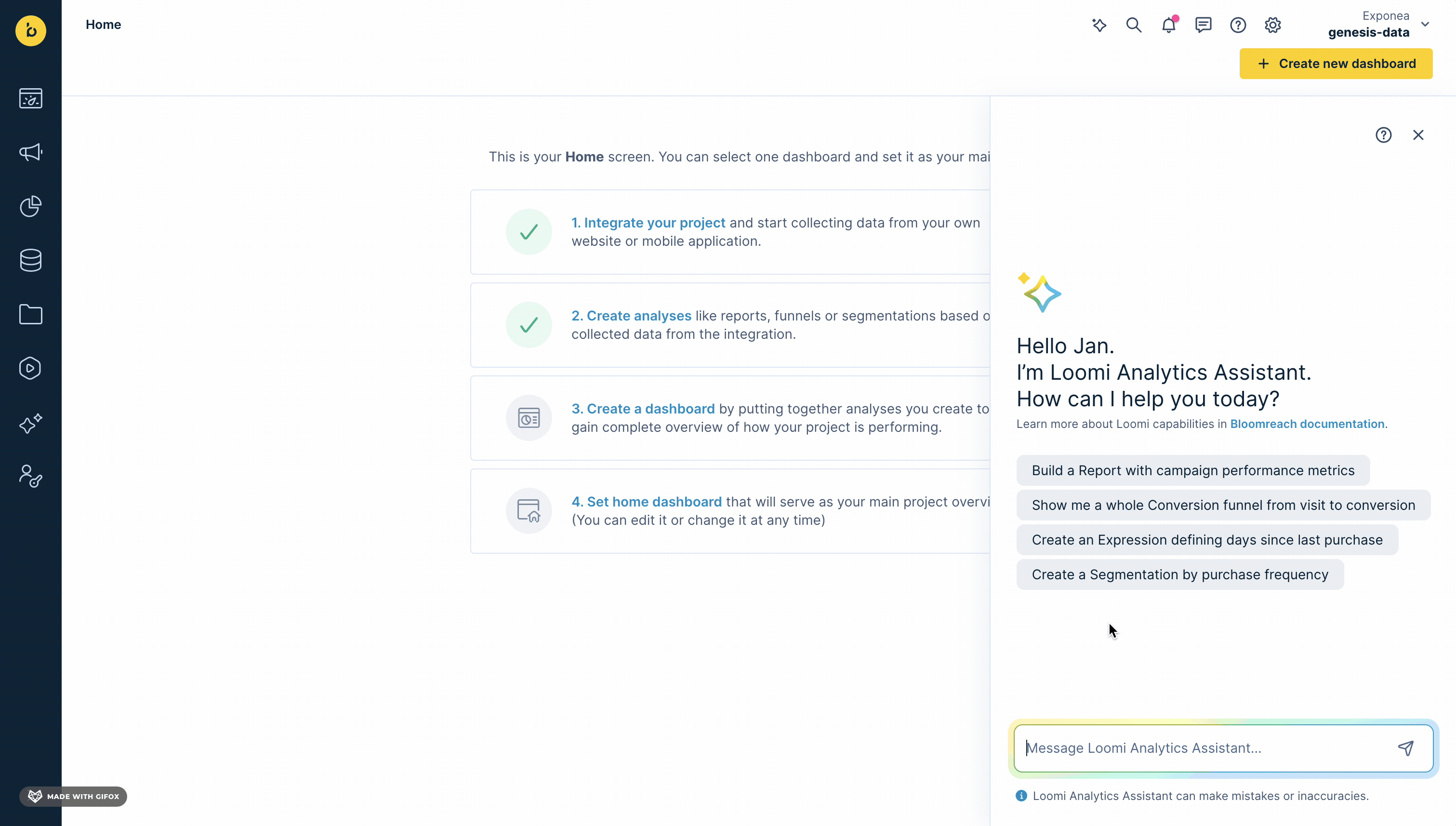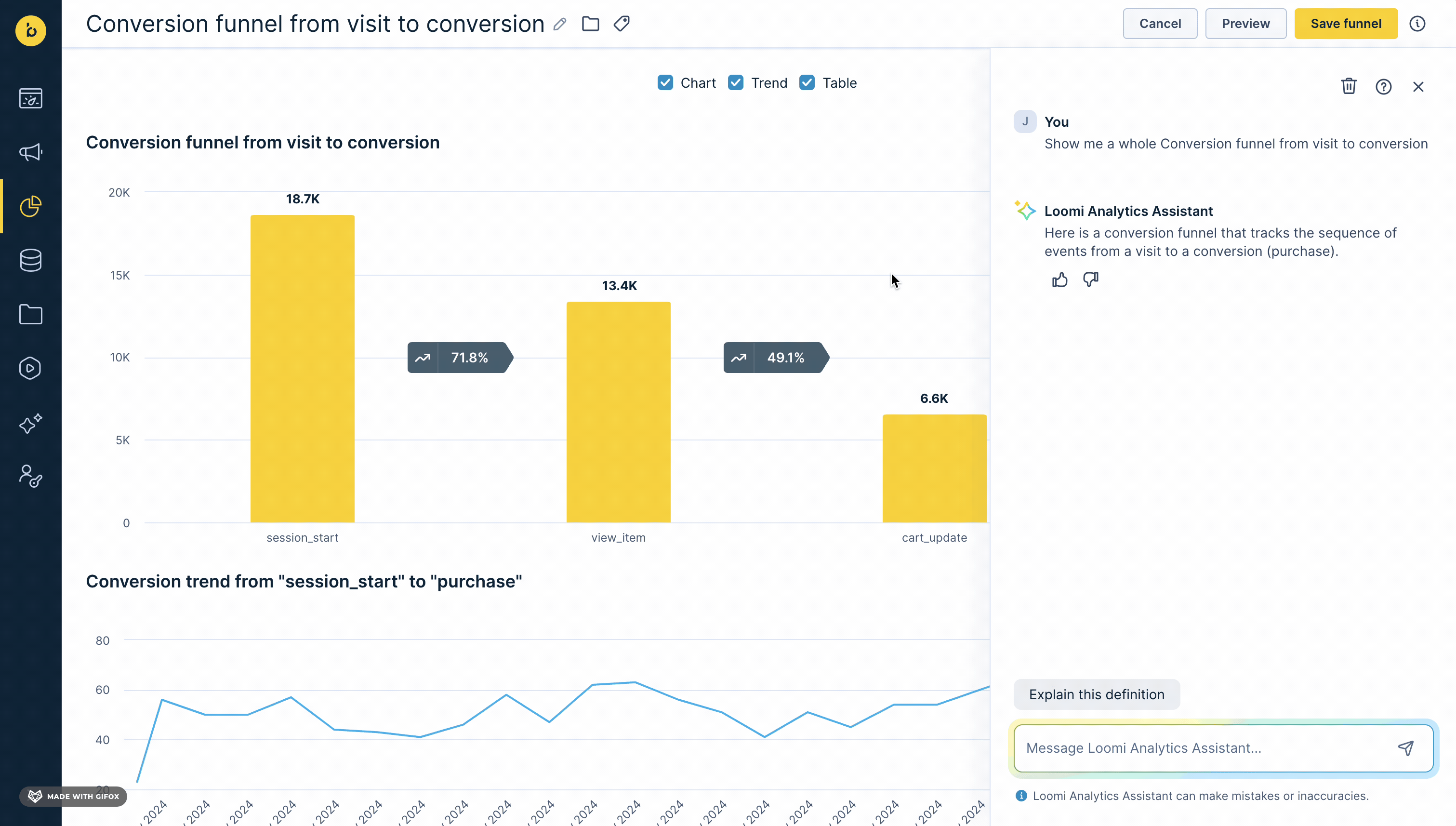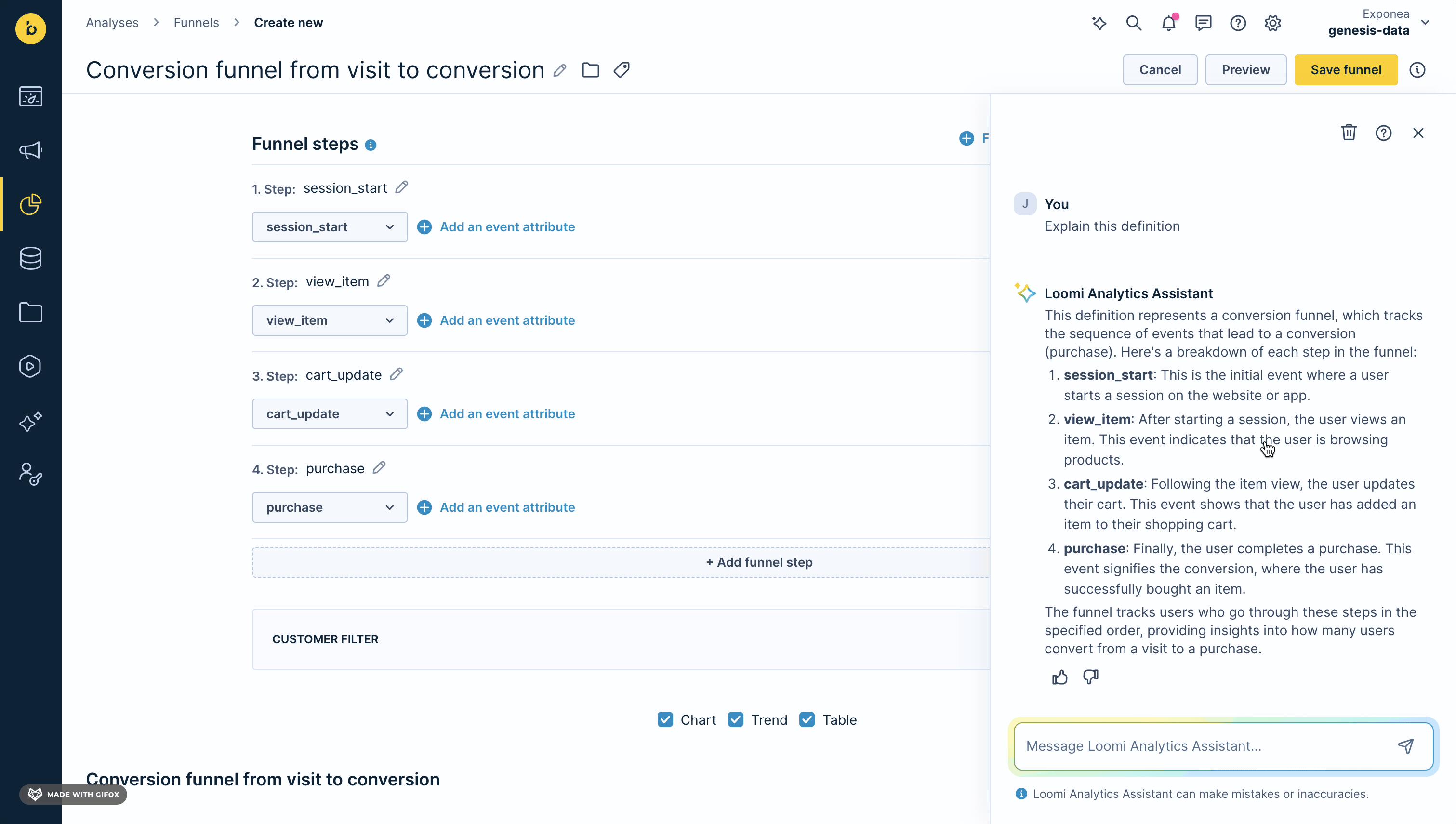Loomi Analytics
This is a Premium tier feature powered by Loomi AI. For further information contact your CSM.
Loomi Analytics allows you to generate analyses (report, funnel, trend, segmentation) and definitions (metrics, aggregate, running aggregates, and expressions) by asking questions or sending requests in human language. It also provides explanations for the definitions it generates.
Loomi Analytics helps you create any analysis and get insights from data without a steep learning curve and hours spent building it.
Watch the video below and see Loomi Analytics in action.
Interactive tour
Try an interactive tour to learn how to create reports, funnels, segments and more in seconds with Loomi AI.
E08 9 steps, 2 minutes
How to use Loomi Analytics
Launch Loomi Analytics
Open Loomi Analytics by clicking on the Star icon in the top right corner.

Enter request
Enter your request in the text field, or click to choose from a pre-defined prompt.

Send request
Click on the Send button or press Enter to send a request.
Check the results
Verify the results once your analysis or definition is complete to ensure data accuracy.
Let Loomi Analytics explain
After creating the analysis, you can see a button "Explain this definition". If you click it, Loomi AI will explain the definition, not the results.

Provide feedback
We welcome your feedback. We aim for perfection, and your insights are invaluable to us. Evaluate each response by clicking the Thumbs Up (positive) or Thumbs Down (negative) icon. Specify what was good or what could be improved.

Use case examples
Loomi Analytics always provides the best answers and responses possible.
- Build reports: "Show me email campaign evaluation with metrics -
sent,delivered,opened,clicked,open rate, andclick rateall in last 30 days drilled down by country" - Build trends: "Show me the trend of
session_startevents in the last 7 days" - Build metrics: "Create metric defining active users in the last 7 days"
- Build segmentation: "Create segmentation based on the number of purchases"
- Build aggregate: "Create aggregate defining total spend"
- Build expression: "Create an expression defining the time between purchase and the last clicked campaigns"
- Build event segmentations: "Create an event segmentation to categorize website visits based on the device used. For example, segment the
session_startevent intomobile,desktop, andtabletcategories."
Limitations
- There is a length limit for each conversation. The limit is based on the number of characters. When the limit is hit, an error occurs.
- Loomi Analytics can't make any adjustments to the definition, which was created manually.
- Loomi Analytics can't refer to any existing definition or analysis.
- Loomi Analytics can't build Flows.
- Loomi Analytics can't build Geo Analysis.
- Loomi Analytics can't build Retention.
Data protection and privacy
Loomi Analytics feature (also known as the Copilot) prioritizes data privacy and security. It does not collect, process, or store any Personally Identifiable Information (PII). Instead, the system interacts solely with anonymized data related to the data schema, including customer attributes, event types, and event attributes, without tracking any values for these attributes.
Data privacy
- Works with project data: Loomi Analytics understands your data schema (customer properties and event attribute names) and examples of the tracked value of each property or attribute needed for building analysis.
- No PII handling: The Loomi Analytics feature does not handle PII. This means that Loomi AI never accesses properties marked as PII in the Data Manager.
- No training: No project data (schema or data examples) are used for model training.
Prompting
- No saved prompts: Loomi Analytics does not store any prompts written by users. It only uses the prompts to maintain the context of the conversation. Prompts are discarded when users start a new conversation or manually clear the context.
- No background processes: Loomi Analytics does not work autonomously. Users trigger every interaction. This means that if a user does not send any requests to Loomi Analytics, no actions are taken in the background.
Improvements: We store prompts only for internal purposes. This storage helps us understand the context of the feedback.
Compliance
- GDPR compliant: The Copilot feature is being reviewed within the privacy-by-design process and fully complies with the General Data Protection Regulation (GDPR) and other applicable data protection regulations.
- Regular audits: We conduct regular tests and development to ensure continuous compliance with regulations.
Transparency
- Comprehensive documentation: This documentation offers detailed insights into our data handling practices.
- User communication: Users are notified in advance of any significant changes to the feature, especially those that affect data privacy and security. Consent is always required from users before they can use the feature.
- Feedback mechanism: Users can raise concerns or provide feedback through our dedicated communication support channels.
Updated about 1 year ago
